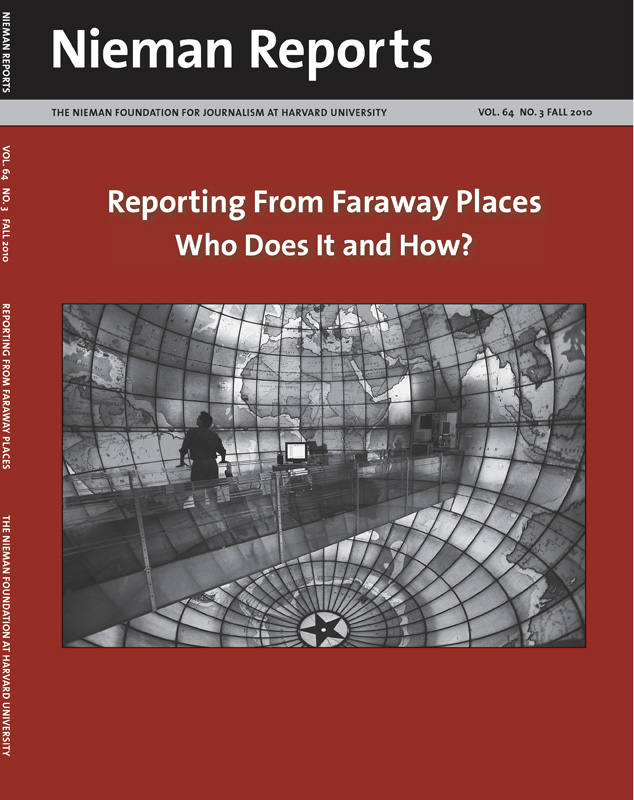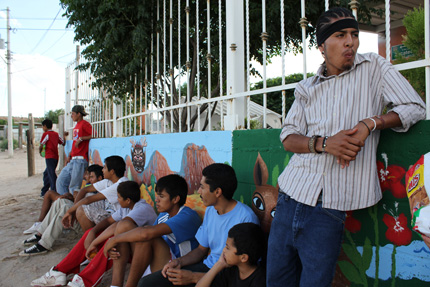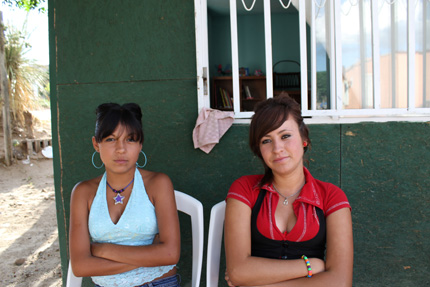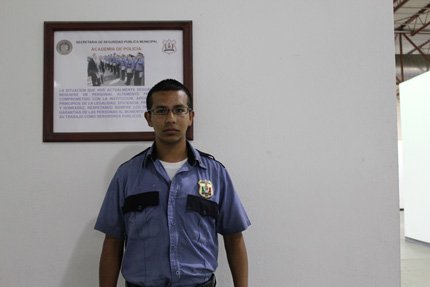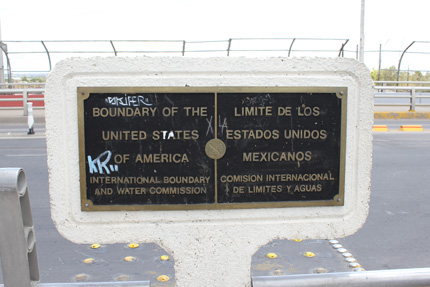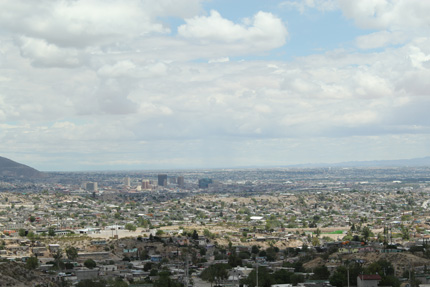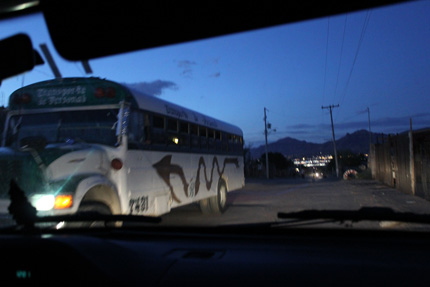Eight o’clock Monday morning in Ciudad Juárez, Mexico. Federal cops, their high-powered weapons pointed outward, packed pickup trucks and patrolled the city’s streets. Women waited at a bus stop to head to factory jobs. A newspaper’s front page featured grisly crime scene photos. It was July, searing hot, and I headed to my first interview.
Unlike my previous trips to Juárez, I was not there on a traditional news assignment. On this reporting project my partner was the Carr Center for Human Rights Policy at Harvard University’s Kennedy School of Government. This opportunity arose during my Nieman year when I noticed a growing interest among academics in Mexico’s escalating drug cartel-related violence. Having reported from Mexico for several years, I developed a proposal for research that would focus on citizens’ response to the violence in Juárez, the epicenter of Mexico’s bloody drug war.
My proposal struck a chord with Leonardo Vivas, a fellow at the Carr Center. My reporting would provide a contemporary, frontline view of how some residents in Juárez are attempting to address neighborhood troubles brought on by the violence of the drug cartels. It turned out that the topic I wanted to report on fit well into a conference—sponsored by Harvard and Mexico’s Monterrey Institute of Technology and Higher Education—that he was planning about Mexico’s drug wars.
This kind of university partnership signals an interesting and perhaps overlooked opening for journalists, particularly those with a specialized area of reporting. In my case, Mexico and its battle against powerful drug cartels are topics I’ve covered for many years. Typically, university support for those in news media comes in the form of journalism schools, foundations, such as the Nieman, or other awards. But I’m learning to look, too, in lesser known academic nooks, at smaller centers and institutes that may be flexible and interdisciplinary—and open to new ideas and partners.
Of course, while it can help to have a relationship with a university, it’s not a requirement. What will make this work is if a department chair or professor is able to appreciate your idea, evaluate your expertise, and trust that it will be a good complement to their research. At the same time, universities, many of which are increasingly cash-strapped, are not looking to fund journalists. The bar can be high and funding tough to find. What’s crucial is that your experience and expertise, whether it’s been gained through covering health, religion or Latin America, meshes with the interests of the university.
Finding such a partnership has clear benefits. To meet the requirements the Carr Center set out for me, I will present a report at the conference about anti-crime initiatives in Juárez being led by citizens, the challenges they face, how they measure success, and the type of support they need to advance their projects. I will also tap the material I gathered in Juárez for use in producing my own stories. With the luxury of not being on a tight deadline for a news organization, I had the freedom to watch a story unfold as I did my reporting and research. Of course, there’s no guarantee that a long-form magazine piece will evolve from this. I’ll have to regroup and write a story proposal, but with a good deal of on-the-ground reporting behind me, I have a strong start.
There are other pluses. Before heading to Mexico, Vivas, an expert on Latin America, passed me a stack of papers he had collected on violence and social capital. Other academics also offered their guidance and insight into topics including corruption, Mexico’s political history, and drug gang dynamics. In Juárez, I traveled with Viridiana Rios, a doctoral candidate at Harvard’s Department of Government who is also researching Mexico. Our daily recaps, poring over our notes and taking stock of the day’s interviews, provided a valuable running dialogue about Mexico’s dilemmas.
Two recent reports underscore the dangers that journalists face in Mexico:
“Silence or Death in Mexico’s Press”
– Committee to Protect Journalists
“Journalism in Times of Threats, Censorship and Violence”
– Knight Center for Journalism in Latin AmericaOnce back from Juárez, I checked in with fellow freelance journalist Eliza Barclay, who had just returned from a three-week research trip to China, funded by Johns Hopkins University. While completing a master’s degree in science writing, Barclay spotted a call for proposals from the Center for a Livable Future. The grant for research on diet, health and food security—topics Barclay has written about extensively—was open to all Johns Hopkins’ students. With her application, Barclay attached a cover letter acknowledging that funding a journalist might be unorthodox. But her proposal appealed to the selection committee and, after defining her methodology a bit more precisely, she got the grant.
While Barclay and I agreed on the upsides of university funding, we also acknowledged that the arrangement and mission of a project must be clear. The university funded our research and, for a time, we were within the academic sandbox. But we are still journalists, and our work reflects our strengths—relating stories and testimonies we gathered and arriving at possible conclusions. If a university trusts that our storytelling and research skills can benefit their work, too, then let us hope that such partnerships expand.
Monica Campbell, a 2010 Nieman Fellow, reported from Mexico for The Christian Science Monitor, San Francisco Chronicle, Newsweek and other magazines from 2003 to 2008 and was the Mexico consultant for the Committee to Protect Journalists. She is now based in New York.


